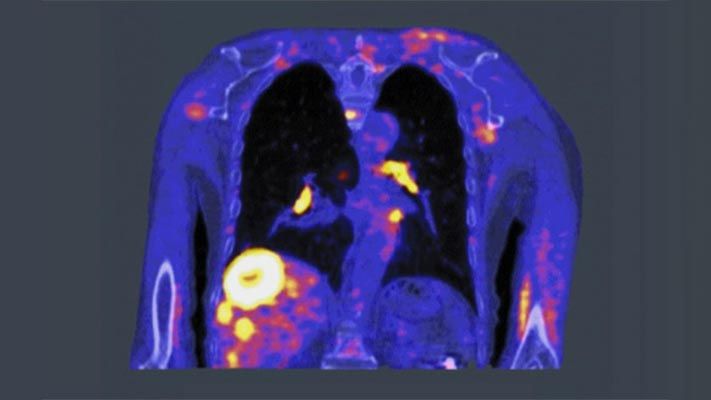MATLAB and Simulink for
With MATLAB and Simulink, you can design, develop, simulate, and deploy patient monitoring devices and Software as a Medical Device (SaMD) applications in the cloud at scale while complying with global regulatory standards for medical devices. You can validate MathWorks products for use in FDA/CE-regulated workflows and meet harmonized standards such as IEC 62304.
Learn how others use MATLAB and Simulink to develop next-generation patient monitoring products, reducing the time needed to bring the devices to market.
“MATLAB, MATLAB Coder, and Fixed-Point Designer enabled our small team to develop a complex real-time signal processing algorithm, optimize it to reduce power and memory requirements, accelerate embedded code implementation, and perform the rigorous testing required for medical device validation.”
Using MATLAB and Simulink for Developing Patient Monitoring Devices
Developing AI-Enabled Patient Monitoring Devices
With the Model-Based Design approach for developing medical devices, you can build AI-enabled medical devices while complying with medical device regulations such as IEC 62304. Using MATLAB, you can develop AI models with machine and deep learning techniques to analyze biomedical signals, medical images, and healthcare data. Using Simulink as a platform, you can integrate machine learning models and automatically generate code to perform requirement verification, automatically generate tests, and comply with certification standards. Highlights include:
- Point-and-click apps for training and comparing machine and deep learning models
- Automatic machine learning (AutoML), including feature selection, interpretability, model selection, and hyperparameter tuning
- The ability to use the same code to scale processing to big data and clusters
- Perform algorithm verification and tool validation in MATLAB


Modeling and Simulating Patient Monitoring Devices
The development of patient monitoring can span multiple engineering domains such as software, mechanical, electrical, and fluidic systems. By using Simulink in dynamic system modeling, you can integrate these domains in a unified simulation environment to efficiently design and implement complex patient monitoring devices. Dynamic system modeling and simulation can speed up product development times, including the validation and verification phases for such devices. Using Model-Based Design with MATLAB and Simulink is a modular development approach that enables engineering teams to move from internal research and development to design and implementation in a single environment.
Learn More
- Accelerating Development of a Diabetes Management System with Model-Based Design: Q&A with Bigfoot Biomedical
- Academic Startup Humotech Turns Wearable Device into Commercial Product
- Reducing Risk with Model-Based Design: Q&A with Philips Healthcare
- ITK Engineering Develops IEC 62304–Compliant Controller for Dental Drill Motor with Model-Based Design
- Medviso Receives FDA 510(k) Approval and CE Marking for Cardiovascular Analysis Software
Explore Products
Deploy and Scale Patient Monitoring Algorithms in Cloud and Edge Devices
You can perform large-scale computations and parallelize simulations using multicore desktops, GPUs, clusters, and clouds. You can process your data right where you store it with MATLAB, scale to high-performance clusters using MATLAB Parallel Server, and incorporate MATLAB analytics into applications with MATLAB Production Server.
MATLAB and Simulink enable you to generate code and run it on hardware with the push of a button. These products help you design, code, and verify your next embedded system from prototyping to production. Using MATLAB and Simulink, you can:
- Run reliable, secure, and scalable production applications on Windows® and Linux®, either on-premises or on public clouds like AWS® and Microsoft® Azure®
- Align with existing DevOps workflows and tools, and enable engineers to self-deploy their models, algorithms, and applications to production systems without having to recode
- Generate optimized C, C++, CUDA®, Verilog®, VHDL®, and Structured Text code

Code Examples
- Deploy Signal Classifier on NVIDIA Jetson Using Wavelet Analysis and Deep Learning
- Deploy Signal Classifier Using Wavelets and Deep Learning on Raspberry Pi
- Code Generation for Deep Learning Simulink Model that Performs Lane and Vehicle Detection
- SIL and PIL Verification for Deployment on Raspberry Pi
Explore Products

Verification, Validation, and Testing
The extensive verification and validation capabilities within Simulink let you perform rigorous testing and verification of models and code for target hardware. With Simulink Test and Requirements Toolbox, you can:
- Author, analyze, and manage requirements and create traceability reports
- Perform model and code coverage analysis that measures the completeness of testing
- Manage simulation-based tests of models, generated code, and simulated or physical hardware
- Identify hidden design errors such as integer overflow, dead logic, and division by zeros
- Produce customizable reports to use as evidence of FDA/CE regulatory compliance
See How Others Use MATLAB and Simulink

An Intensive Push to Make Ventilators for the COVID-19 Pandemic
Creating a New Design in 47 Days for the UK Ventilator Challenge

Wearable Tech Provides Data-Driven Mental Health Therapy
Partnering Psychotherapists with Algorithms to Improve Mental Health Treatment

Unique Lab Creates Accessibility and Mobility Solutions for People with Disabilities
Developing Assistive Tech from Robotic Wheelchairs That Climb Curbs to Brain-Machine Interfaces

Tackling Tumors in a Single Step
Improving Cancer Treatments with Signal Processing and Advanced Image Reconstruction

Fighting Childhood Pneumonia
Turning a Medical Crisis into an Engineering Challenge to Save Lives





